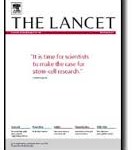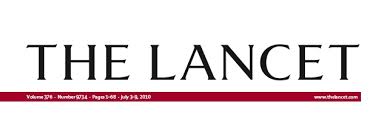PROUD PrEP Study Results Published in The Lancet
Written by Gus Caims published on HepatitisandHIV.com 9/15/2015
The results of the PROUD study of HIV pre-exposure prophylaxis (PrEP) using daily tenofovir plus emtricitabine (Truvada) have now been published online in The Lancet scientific journal. PROUD, along with the other European randomized study of PrEP, Ipergay, demonstrated considerably higher levels of PrEP effectiveness in preventing HIV infections than any previous study. PrEP should now be offered routinely as part of sexual health services, says an accompanying editorial.
[Produced in collaboration with Aidsmap.com]
[Disclosure: Author Gus Cairns of NAM is co-chair of the PROUD Trial Steering Committee and a member of the Community Engagement Group]
The results from both studies were presented this February at the Conference on Retroviruses and Opportunistic Infections (CROI 2015). There is little difference between the results in The Lancet and those presented at CROI, but journal publication is important for the provision of PrEP in Europe, as both the European Medicines Agency (EMA), which regulate the licensing of medicines, and the European Centre for Disease Prevention and Control (ECDC), which issues public health recommendations, both require journal publication for studies to be included in their evidence.
One statistically significant change in behavior among men on PrEP was detected by the researchers — an increase in the proportion of men who had high numbers of condomless sex partners as the receptive partner — but it is clearer than before that there was no change in the incidence of sexually transmitted infections (STIs) when men started PrEP.
The effectiveness of PrEP in PROUD remains 86% (meaning that PrEP prevented just over 17 out of every 20 HIV infections that would otherwise have happened), and the number of men needed to be treated with PrEP to stop 1 HIV infection remains at 13. However, the lower bound of the 90% confidence interval for the effectiveness of PrEP shifted upwards from 58% to 65%. What this means is that there is a less than 1-in-10 chance that if the study was repeated again, PrEP would turn out to be less than 65% effective.
The participant demographics remain almost the same as those reported in April 2014 when recruitment was complete: 544 men were enrolled at 13 sexual health clinics in England. 275 were randomly allocated to take daily Truvada as PrEP immediately and 269 were assigned to wait for a year before starting it.
There were 3 HIV infections observed among the men allocated to immediate PrEP, but 1 of these almost certainly caught HIV just before he started PrEP (he tested HIV-positive at his second visit a month after starting), while the other 2 had stopped taking PrEP months before they acquired HIV.
There were also 3 men (not 6 as stated in the February report) who tested HIV-positive at their first clinic visit, the day they were first given PrEP, and must have caught it at most 2-3 weeks before. Of those who started PrEP while they already had HIV, 2 men, including the man diagnosed on his second visit, developed resistance to emtricitabine; no one developed resistance to tenofovir.
In contrast 20 men in the deferred arm (not 19 as originally thought) caught HIV during the year they were waiting for PrEP, and this means the observed annual HIV incidence changed slightly to 9% in the deferred arm and 1.2% in the immediate arm.
The 9% incidence seen in the deferred arm is very high — roughly 7 times higher than the 1.34% seen among gay men attending English sexual health clinics in 2012. This underlines that the men who came forward or were referred to PROUD were a highly selected group of the most at-risk gay men.
Another fact that supports this is that 64% of trial participants had an STI diagnosed in the year before joining the study — an aggregate figure that was not reported at the spring 2014 BHIVA conference when baseline trial demographics were presented (only the figures for individual STIs were reported).
This means that there was clearly no increase in STIs among participants taking PrEP: 57% in the immediate arm and 50% in the deferred arm had an STI diagnosed during the study, but because men in the immediate arm had more tests, after adjustment this is only a 7% difference, which is not statistically significant. In particular, after adjustment there was no difference at all in the one-third of men who caught a rectal bacterial STI, the most sensitive indicator of being the receptive partner in condomless anal sex, which is 17 times more risky than being the insertive partner when it comes to HIV infection.
There was one statistically significant difference in terms of behavior. During the study a larger proportion of participants in the immediate PrEP arm reported condomless receptive anal sex with 10 or more partners in the previous 3 months than participants in the deferred arm (21% versus 12%; probability 0.03%). However, while this was an increase over baseline, it did not translate into more STIs, and the number of partners with whom participants had any anal sex did not change.
Researchers Sheena McCormack and colleagues concluded: “Our findings strongly support the addition of PrEP to the standard of prevention for men who have sex with men at risk of HIV infection.”
In an accompanying editorial, PrEP researcher Ken Mayer of Fenway Health in Boston and Chris Beyrer, President of the International AIDS Society, commented:
“The results from PROUD suggest that pragmatic deployment of PrEP must be part of any relevant primary HIV prevention strategy…PrEP should be part of the range of services offered by any clinical program that focuses on sexual health. The time for cautionary speculation is over: HIV prevention services should be expanded worldwide by offering PrEP routinely to those who could benefit.”
9/15/15
References
S McCormack, DT Dunn, M Desai, et al. Pre-exposure prophylaxis to prevent the acquisition of HIV-1 infection (PROUD): effectiveness results from the pilot phase of a pragmatic open-label randomised trial. The Lancet. September 9, 2015 (online ahead of print).
KH Mayer and C Beyrer. Antiretroviral chemoprophylaxis: PROUD and pragmatism. The Lancet. September 9, 2015 (online ahead of print).
